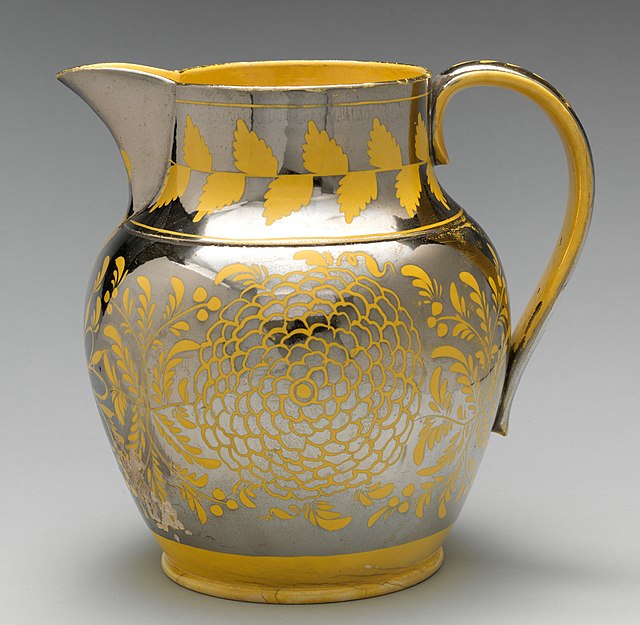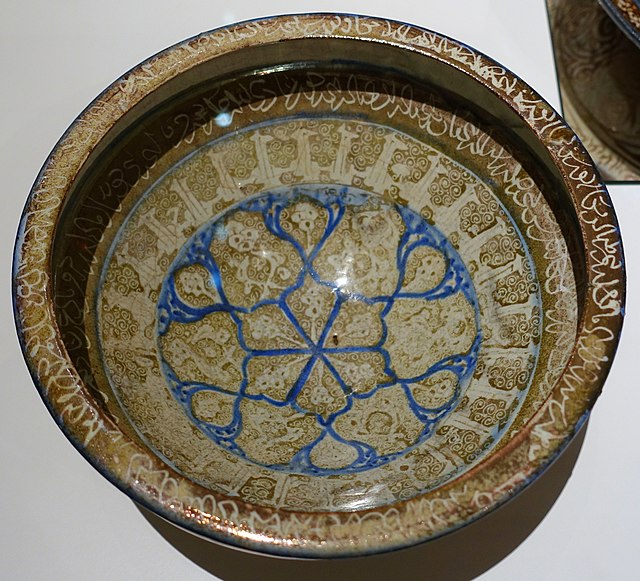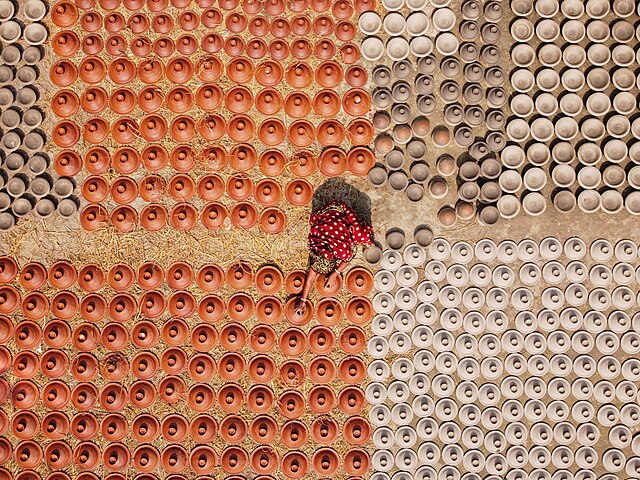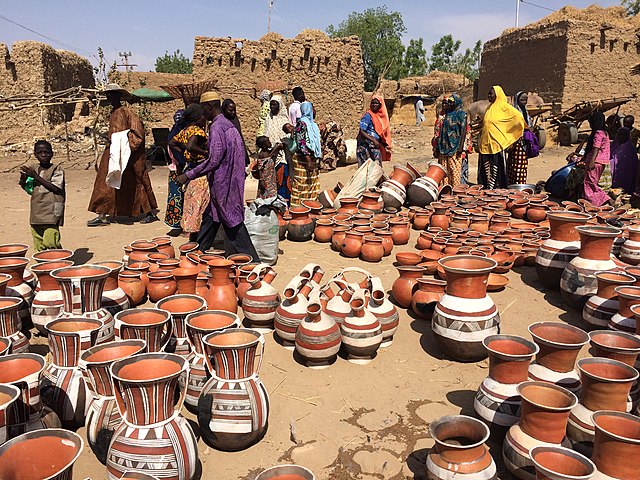Lustreware or lusterware is a type of pottery or porcelain with a metallic glaze that gives the effect of iridescence. It is produced by metallic oxides in an overglaze finish, which is given a second firing at a lower temperature in a "muffle kiln", or a reduction kiln, excluding oxygen.
Staffordshire pottery jug, c. 1815
Fritware dish, Persia, 13th century
Mary Magdalene on Italian maiolica dish, Gubbio, 1530–40
Bowl from Iraq, mid-800s. Lustre technique. Room 42–43, British Museum. 1956,0728.2
Pottery is the process and the products of forming vessels and other objects with clay and other raw materials, which are fired at high temperatures to give them a hard and durable form. The place where such wares are made by a potter is also called a pottery. The definition of pottery, used by the ASTM International, is "all fired ceramic wares that contain clay when formed, except technical, structural, and refractory products". End applications include tableware, decorative ware, sanitary ware, and in technology and industry such as electrical insulators and laboratory ware. In art history and archaeology, especially of ancient and prehistoric periods, pottery often means vessels only, and sculpted figurines of the same material are called terracottas.
Hand building a jar.
Finished pottery products kept for drying in the sun.
An 18th-century Chinese export porcelain service, for the America market
The pottery market in Boubon, Niger.








